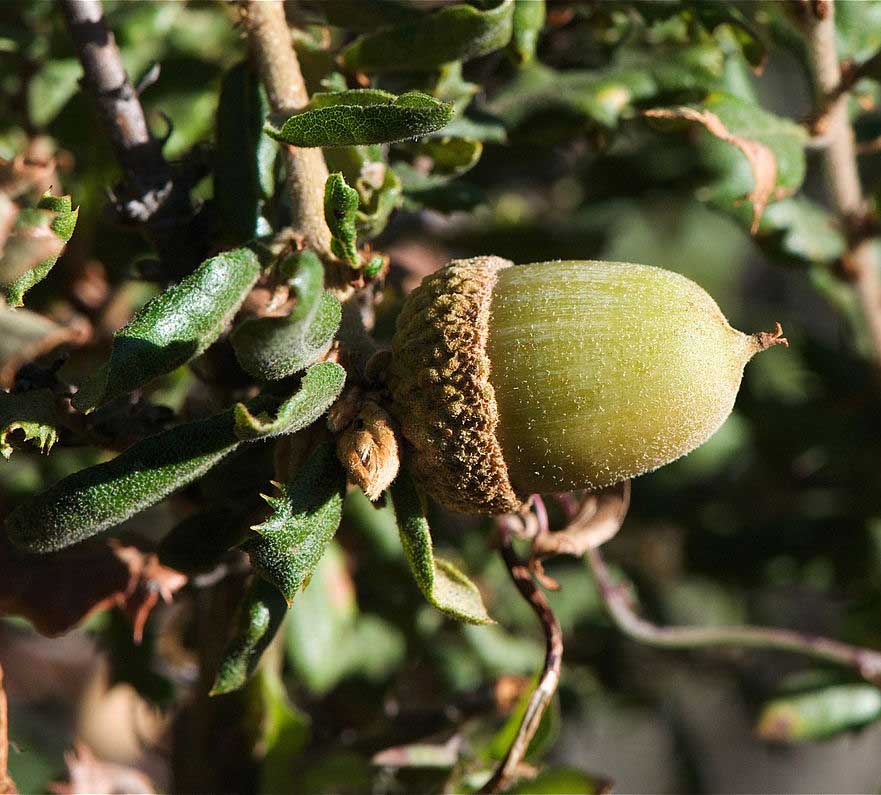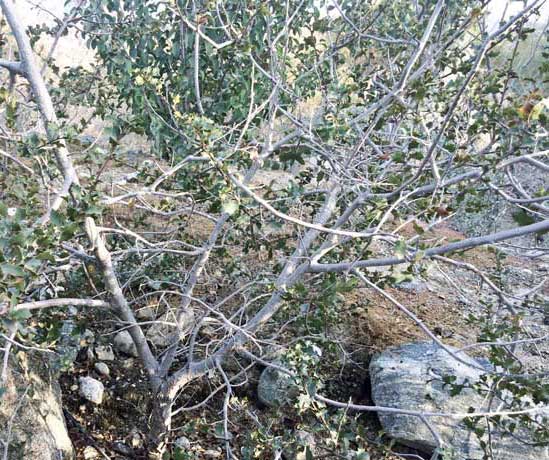Ethnobotany of southern California native plants:
California scrub oak (Quercus dumosa)

credit:jkirkhart35 CC BY 2.0, via Wikimedia Commons
An acorn on the California scrub oak.

Scrub oak in the winter.
California scrub oak (Quercus dumosa)
California scrub oak is a type of oak tree in the Fagaceae family. This species lives in Baja, Mexico and southern California. The tree is also referred to as Nuttall’s scrub oak and the coastal sage scrub oak. Quercus dumosa is a dominant plant in the chaparral biome of the greater San Diego and Los Angeles area.
Oak trees were a primary food source for southern California Native Americans. Acorns of various oak trees were collected, leached to remove tannins, then ground into a powder meal and used to make bread or mush. However, the early settlers preferred the acorn of the live oak. In general, natives would only eat the scrub oak acorns if they couldn’t find any California live oak.
Historical uses of scrub oak
The Cahuilla, Kawaiisu and Kumeyaay people gathered acorns then stored them in primitive granaries for long term storage.
The Cahuilla people would often prepare flour meal from the scrub oak, then trade this acorn meal in exchange for preferred foods (pinyon nuts, mesquite beans and palm tree fruits).
The acorn of the scrub oak may not have tasted great, but the thick wood of the trunk and base branches did provide excellent construction material for shelters. The wood of the scrub oak also made for good firewood.
The Kumeyaay prepared a decoction of oak galls to use as an eye wash. Oak galls are large, round protrusions that grow parasitically on oak trees. These galls are caused by chemicals injected by the larvae of certain types of gall wasps.
The Luiseno people, near the Los Angeles area, also used these galls. They were applied to sores and wounds as a means to promote healing.
References:
Hedges, Ken 1986 Santa Ysabel Ethnobotany. San Diego Museum of Man Ethnic Technology Notes, No. 20 (p. 33)
Sparkman, Philip S. 1908 The Culture of the Luiseno Indians. University of California Publications in American Archaeology and Ethnology 8(4):187-234 (p. 233)
Please return to our main Ethnobotany of southern California page.
On our main ethnobotany page, we present a clickable list of the southern California native plants that became a part of the culture of Native Americans and early European settlers. These plants were used for medicine, food, shelter, drink, tools and art.
Warning: The information about plants on this website is intended for general educational purposes only. The author of this website accepts no responsibility for problems arising from the user’s misidentification, misuse, or use of plants. Please read the full TERMS associated with this website.
